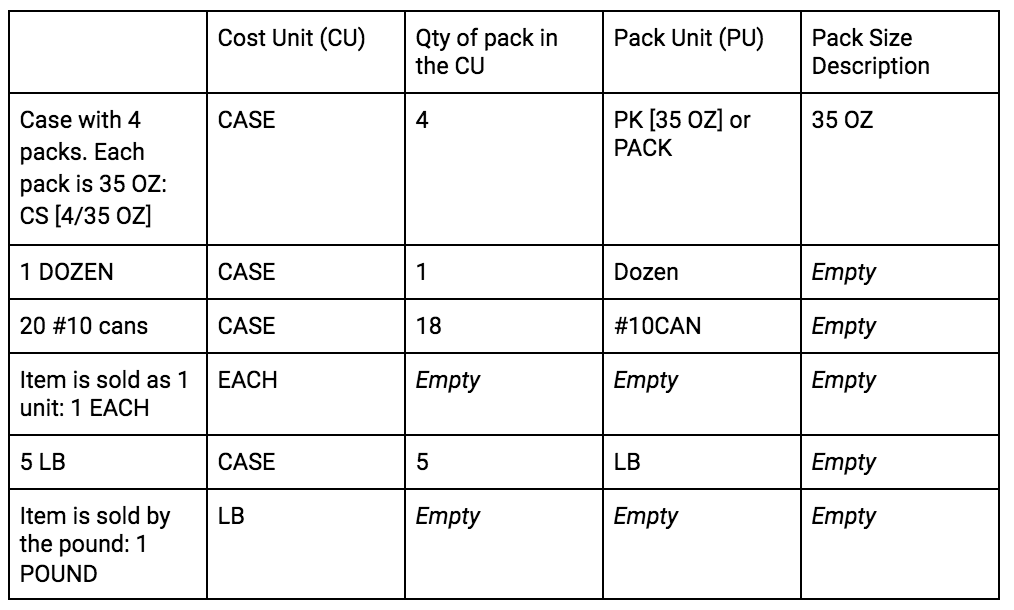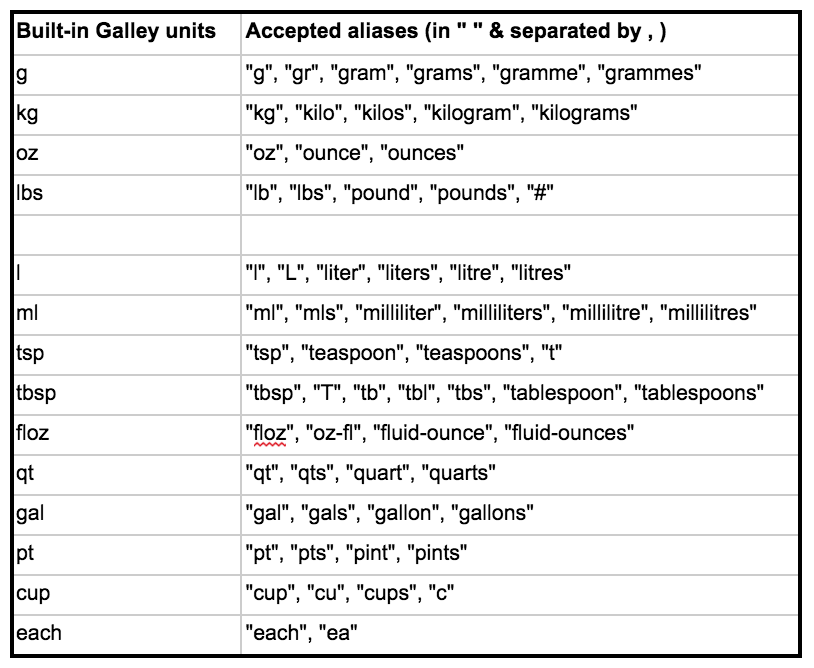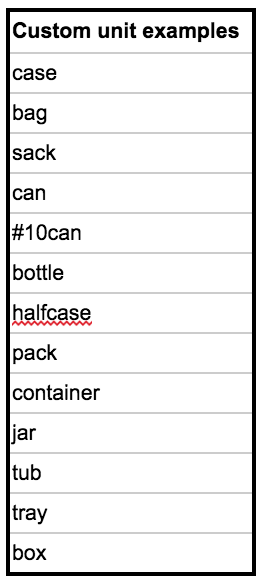What information is required to add vendor items?
In order to add vendor data to Galley, whether it's a single ingredient or multiple items via a bulk upload, there is some information you need to know about your vendor items:
-
Name: The name of the vendor item (to be able to update vendor data pricing later on without creating duplicates you want to make sure you keep the item names consistent between uploads).
-
Vendor Name: This is the vendor selling each item.
-
SKU: Each vendor item should have a SKU, usually provided by the vendor. Matching SKUs is primarily how Galley prevents creating duplicate items during pricing updates.
-
Cost (Dollars): Each vendor item should have the latest price in dollars. The price will be "per" the Cost Unit.
-
Cost Unit (CU): The cost unit is the largest unit that a vendor item is sold in. For example, if you buy a case of apples, the cost unit is “CASE”. If you buy individual gallons of milk, the cost unit is “GAL”. You can build in additional pack-size conversions using the Pack Unit Breakdown. Galley understands both canonical (standard volume or weight) and custom units during an import. To see examples of canonical and custom units, scroll to the bottom of the page.
-
Breakdown of the Cost Unit: Any additional pack-size conversions can be included in the upload in the form of a breakdown of the Cost Unit.

Breakdown of the Cost Unit:
-
Quantity of packs in the CU: The number of packs that come in a case. If an item is sold in a case that doesn't have multiple packs, the Quantity of pack in the CU is the "size" of the individual case. For example, if an item is sold in a case of 5 Gal, the Qty of packs is 5 and the Pack Unit would be Gal.
-
Pack Unit (PU): The pack unit describes an intermediary unit that you find within a given cost unit. For example, sometimes a vendor annotates a case of product as being a 4 / 5 LB case (i.e., a case with 4 packs, each being 5 lbs)
-
Quantity of Sub Unit: In the highlighted example, the Quantity of Sub Unit would be “5”. The Quantity of Sub Unit is the size of the smallest pack of the vendor item.
-
Sub Unit: The Sub Unit is the unit used to quantify the quantity of sub units. In the highlighted example, the Sub Unit would be “LB”
Pack Unit Breakdown Examples:

NOTES:
-
An alternative to the Quantity of Sub Unit and Sub Unit variable is a single variable called Pack Size Description. For the highlighted example above, the Pack Size Description would be “5 LB”.
-
Not every vendor item will have values for each field in the Cost Unit Breakdown.
Other information that you can include with your vendor item data:
-
Brand Name
-
Food Type Category
-
Barcode
-
Notes


